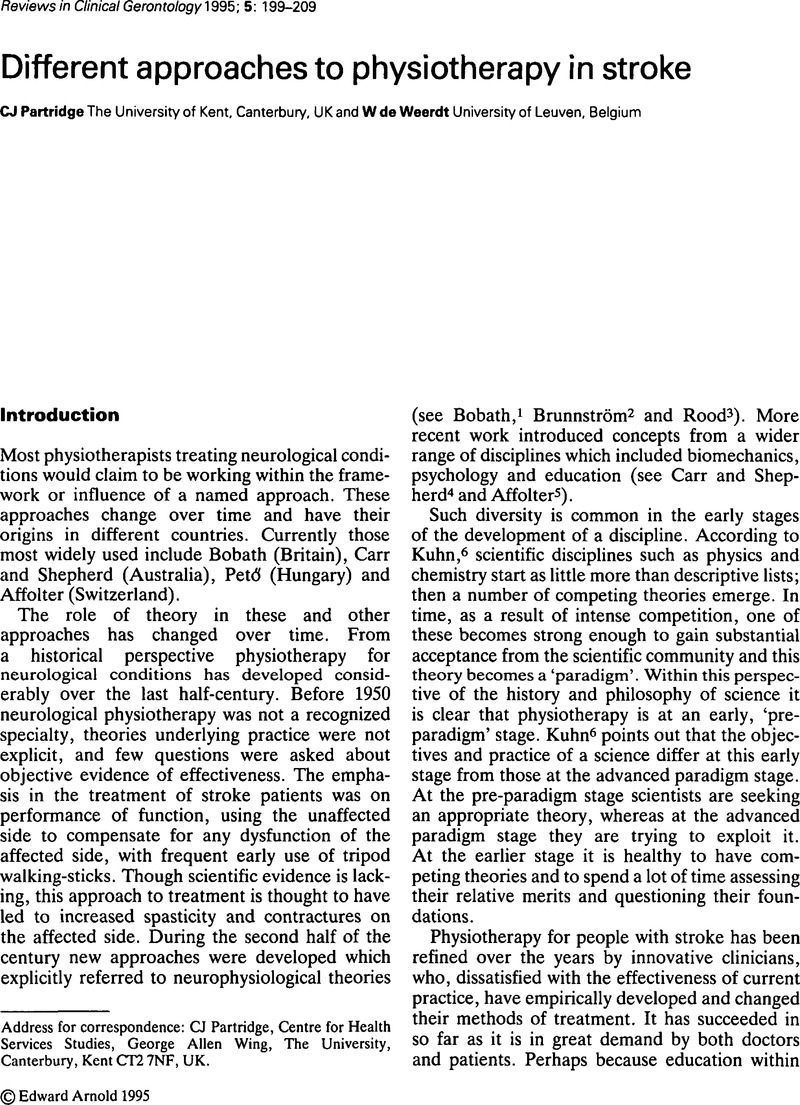Crossref Citations
This article has been cited by the following publications. This list is generated based on data provided by Crossref.
Partridge, Cecily J
1995.
Stroke Physiotherapy.
Physiotherapy,
Vol. 81,
Issue. 3,
p.
167.
Partridge, Cecily
and
Edwards, Susan
1996.
The bases of practice — Neurological physiotherapy.
Physiotherapy Research International,
Vol. 1,
Issue. 3,
p.
205.
O'Keeffe, Shaun
1997.
In reply.
Journal of the American Geriatrics Society,
Vol. 45,
Issue. 6,
p.
781.
van der Lee, Johanna H
Snels, Ingrid AK
Beckerman, Heleen
Lankhorst, Gustaaf J
Wagenaar, Robert C
and
Bouter, Lex M
2001.
Exercise therapy for arm function in stroke patients: a systematic review of randomized controlled trials.
Clinical Rehabilitation,
Vol. 15,
Issue. 1,
p.
20.
Pomeroy, VM
and
Tallis, RC
2002.
Restoring Movement and Functional Ability after Stroke.
Physiotherapy,
Vol. 88,
Issue. 1,
p.
3.
Pomeroy, VM
and
Tallis, RC
2003.
Avoiding the Menace of Evidenced-tinged Neuro-rehabilitation.
Physiotherapy,
Vol. 89,
Issue. 10,
p.
595.
Deakin, Andrea
Hill, Helen
and
Pomeroy, Valerie M
2003.
Rough Guide to the Fugl-Meyer Assessment.
Physiotherapy,
Vol. 89,
Issue. 12,
p.
751.
Pomeroy, V. M.
Cooke, E.
Hamilton, S.
Whittet, A.
and
Tallis, R. C.
2005.
Development of a Schedule of Current Physiotherapy Treatment Used to Improve Movement Control and Functional Use of the Lower Limb after Stroke: A Precursor to a Clinical Trial.
Neurorehabilitation and Neural Repair,
Vol. 19,
Issue. 4,
p.
350.
Elliott, Louise
and
Walker, Louise
2005.
Rehabilitation interventions for vegetative and minimally conscious patients.
Neuropsychological Rehabilitation,
Vol. 15,
Issue. 3-4,
p.
480.
Raine, Sue
2006.
Defining the Bobath concept using the Delphi technique.
Physiotherapy Research International,
Vol. 11,
Issue. 1,
p.
4.
Raine, Sue
2007.
The current theoretical assumptions of the Bobath concept as determined by the members of BBTA.
Physiotherapy Theory and Practice,
Vol. 23,
Issue. 3,
p.
137.
Raine, Sue
2007.
Letter to the Editor.
Physiotherapy Research International,
Vol. 12,
Issue. 1,
p.
50.
Pomeroy, Valerie M.
and
Walker, Marion F.
2010.
Brocklehurst's Textbook of Geriatric Medicine and Gerontology.
p.
870.



